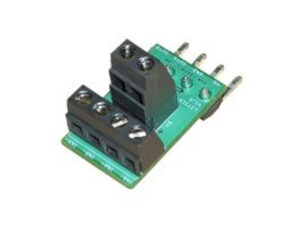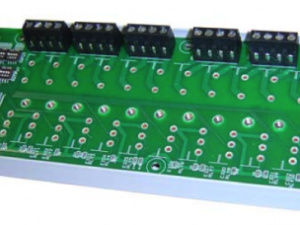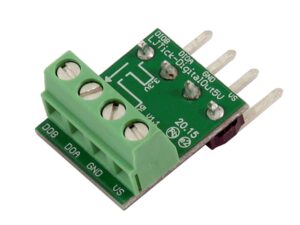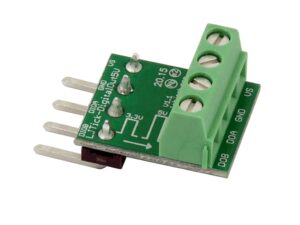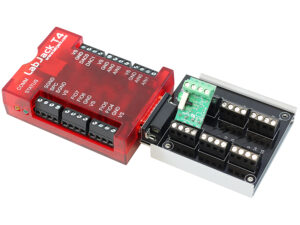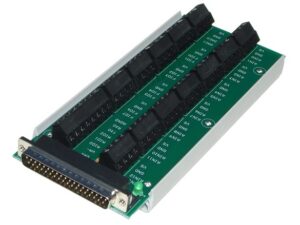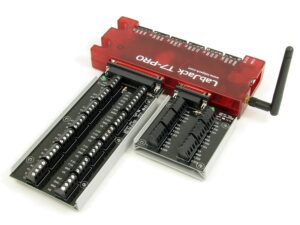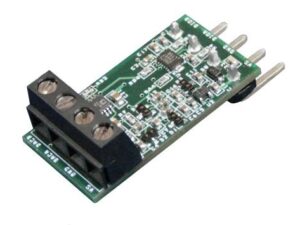Product details
The EB37 experiment board connects to the LabJack UE9’s DB37 connector and provides convenient screw terminal access. Also provided is a solderless breadboard and useful power supplies. The EB37 is designed to connect directly to the LabJack, but can also connect via a 37-line 1:1 male-female cable (not included).
The solderless breadboard is provided for convenient prototyping, and does not have any electrical connections to the rest of the EB37. Looking at the picture above, the breadboard has 2 long rows of 5*10=50 sockets at the top, and two more rows of 50 at the bottom. In each of these 4 rows, all 50 sockets are connected, and thus these rows are generally used as power rails. The remainder of the breadboard is filled with 126 columns of 5 connected sockets each. The breadboard is attached to the EB37 with adhesive. The breadboard area is about 6.5” (165 mm) by 2.2” (56 mm), so if a replacement is needed one possibility is the UBS-100 (available from mouser.com), which can be mounted using screws/nuts rather than adhesive. Note that the UBS-100 (and many similar breadboards) separates the power rails in the middle, such that there are 8 rows of 25 sockets.
The green LED on the EB37 is directly powered by the 5-volt supply (Vs) from the LabJack, so it should be lit whenever the EB37 is connected to a powered LabJack. The red LED is powered directly by the external power supply (wall-wart included).
The EB37 can be powered from the LabJack or the external supply. If both the LabJack and external supply are connected at the same time (both green and red LEDs on), the external supply will provide power. If the external supply is not connected (red LED off), then +/- 10 volts, 3.3 volts, 1.25 volts, and all Vs terminals are powered by the LabJack. If the external supply is connected (red LED on), then it provides power for +/- 10 volts, 3.3 volts, 1.25 volts, and all Vs terminals.
The LabJack always provides power for the green LED, VM+, VM-, and any current sourced/sunk by I/O lines, even if the wall-wart is connected.
In most cases the EB37 can simply be powered by the LabJack, but there are various reasons why powering from the external supply, rather than the LabJack, might be desirable. One obvious reason is if more power is required on the EB37 than can be provided by the LabJack. Other reasons could be avoiding a ground offset between the LabJack and EB37 (as discussed below), avoiding any degradation of the LabJack power supply, or providing an EB37 power supply that is on even when the LabJack is off.


